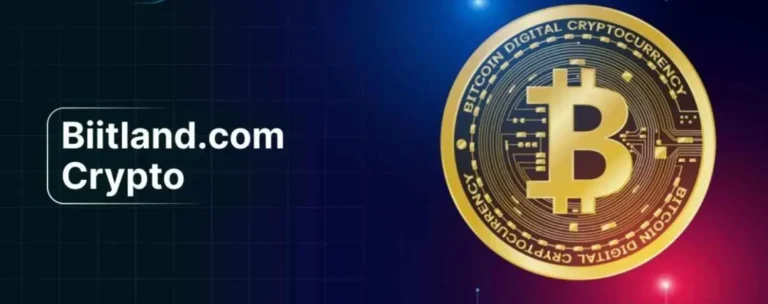Track ALBT Coin Price Trends and Act On Key Insights
The world of cryptocurrency is a whirlwind of innovation and opportunity, with projects like AllianceBlock leading the charge in bridging decentralized finance (DeFi) and traditional finance (TradFi). At the heart of this ecosystem is the ALBT token, a cryptocurrency that has captured attention for its unique role in blockchain finance. But what drives the ALBT coin price? Why does it fluctuate, and what does the future hold for this token?
In this article, we’ll dive deep into the ALBT coin price, exploring its historical trends, the factors shaping its value, and what investors can expect moving forward. Whether you’re a seasoned trader or a curious newcomer, this guide offers clear, actionable insights to help you navigate the volatile crypto market. Let’s get started.
What is AllianceBlock and the ALBT Token?
AllianceBlock is more than just another blockchain project—it’s a game-changer aiming to connect the worlds of DeFi and TradFi. Let’s break down what makes it unique and how its native token, ALBT, fits into the picture.
Overview of AllianceBlock
AllianceBlock is a decentralized, blockchain-agnostic platform designed to create a compliant, efficient capital market. Founded by Rachid Ajaja (CEO), Matthijs de Vries (CTO), and I.N. Amber Ghaddar (CIO), it focuses on enabling financial institutions, traders, and investors to interact seamlessly in a regulated environment. By integrating DeFi’s innovation with TradFi’s stability, AllianceBlock offers tools like liquidity mining, staking, and its Fundrs platform for peer-to-peer funding.
Its partnerships with major players like Polygon, Avalanche, and INATBA (International Association for Trusted Blockchain Applications) highlight its credibility. The platform’s recent transition to the Nexera Protocol marks a bold step toward enhancing interoperability and scalability across blockchains.
Role of the ALBT Token
The ALBT token is the lifeblood of the AllianceBlock ecosystem. It serves multiple purposes:
-
Staking: Users can stake ALBT to become nodes, securing the network and earning rewards.
-
Network Fees: ALBT covers transaction costs within the platform.
-
Governance: Token holders influence decisions through the Prometheus protocol, giving institutional nodes voting power.
-
Rewards: Nodes and participants are rewarded in ALBT for contributing to the ecosystem.
With the shift to Nexera Protocol, ALBT is being phased out in favor of NXRA tokens, a move that has sparked discussions about its long-term value. This transition impacts the ALBT coin price, as investors weigh the token’s diminishing utility against its historical significance.
Historical ALBT Coin Price Trends
Understanding the ALBT coin price requires looking at its journey since launch. From meteoric highs to challenging lows, ALBT’s price history reflects the volatility of the crypto market.
ALBT Price at Launch
AllianceBlock launched ALBT in September 2020 at around $0.15. Early adopters saw promise in its vision to bridge DeFi and TradFi, driving initial interest. The token’s price remained modest in its first year, closing 2020 at $0.2662—a 533.4% increase from its debut. This growth signaled strong market enthusiasm for AllianceBlock’s innovative approach.
Key Milestones and Price Peaks
ALBT reached its all-time high of $1.35 in September 2021, fueled by a booming crypto market and strategic partnerships, including collaborations with Orion Protocol and CertiK certification. The launch of its data marketplace, the “Data Quasar,” also boosted investor confidence. However, 2023 proved tough, with the price dropping to $0.0004986, reflecting broader market downturns and regulatory uncertainties. By November 2024, ALBT hit its all-time low of $0.0000698, a stark contrast to its peak.
Recent Price Performance (2024–2025)
As of June 2025, the ALBT coin price hovers around $0.000124, with a market cap of $57,100–$510,016 and a 24-hour trading volume of $200–$4,950. Recent data shows a -3.23% drop in 24 hours but an 8.6% gain over the past week, indicating high volatility. Compared to other 2020-launched tokens, ALBT’s trading volume is below average, suggesting limited liquidity. The shift to Nexera Protocol has further dampened demand, as ALBT’s utility wanes.
Factors Influencing ALBT Coin Price
What moves the ALBT coin price? From market trends to ecosystem developments, several factors shape its value.
Market Dynamics and Cryptocurrency Trends
The broader crypto market heavily influences ALBT. For instance, Bitcoin and Ethereum price swings often ripple through smaller tokens like ALBT. In 2024, geopolitical tensions, such as Iran-Israel developments, triggered profit-taking in risk assets, impacting ALBT’s price. Positive market sentiment, driven by institutional adoption of crypto (e.g., pension funds buying Bitcoin), can lift ALBT, but bearish cycles can drag it down.
AllianceBlock Ecosystem Developments
AllianceBlock’s progress directly affects ALBT’s value. The launch of Nexera Protocol, a more scalable and interoperable platform, has shifted focus from ALBT to NXRA, reducing demand for the legacy token. However, partnerships with Polygon, BNB Chain, and Energy Web have historically boosted ALBT’s price by expanding its use cases. The Fundrs platform, which supports token sales like FLUUS, also drives ecosystem growth, though its impact on ALBT is now limited.
Regulatory and Environmental Considerations
AllianceBlock’s focus on regulatory compliance sets it apart. Its Regulatory and Compliance Layer ensures transactions align with global laws, appealing to TradFi institutions wary of DeFi’s risks. This compliance focus can stabilize ALBT’s price by attracting institutional investors. Environmentally, ALBT’s Delegated Proof of Stake (DPoS) model is far less energy-intensive than Bitcoin’s Proof of Work, aligning with growing ESG (Environmental, Social, Governance) concerns. Studies estimate Bitcoin’s annual carbon footprint at 114.06 MtCO2, while DPoS systems like ALBT’s consume minimal energy, enhancing its appeal.
Tokenomics and Supply Dynamics
ALBT has a circulating supply of 461 million and a total supply of 1 billion. The AllianceBlock Foundation manages token supply to balance demand, but the transition to NXRA has reduced ALBT’s relevance, impacting its price. Low trading volume ($200–$644.12 daily) suggests limited market activity, making ALBT susceptible to manipulation.
Read More About: Crypto30x.com – Master Bitcoin, Altcoins & DeFi Now
Current ALBT Coin Price Analysis
Let’s zoom in on the ALBT coin price as of June 2025 and what it tells us about its market position.
Real-Time Price Data
As of June 26, 2025, ALBT trades at $0.000124, with a market cap of $57,100–$510,016. It’s available on exchanges like Binance, KuCoin, and Uniswap, with trading pairs like ALBT/WETH and ALBT/USDT. The price has fluctuated between $0.0000698 (November 2024) and $0.00247 (past 52 weeks), reflecting high volatility.
Volatility and Trading Volume
ALBT’s 24-hour price drop of -3.23% and weekly gain of +8.6% highlight its volatility. Its low trading volume ($200–$644.12) indicates limited liquidity, making it prone to sharp price swings. Technical indicators, like the Relative Strength Index (RSI), suggest a neutral market position, neither overbought nor oversold.
Comparison with Similar Projects
Compared to projects like Chainlink or Avalanche, ALBT’s market cap ($57,100–$510,016) is significantly smaller. Chainlink, with a focus on oracles, boasts a market cap in the billions, while ALBT’s niche in compliant DeFi limits its scale. However, AllianceBlock’s unique regulatory focus and cross-chain interoperability give it a competitive edge in the DeFi-TradFi space.
ALBT Coin Price Predictions
What does the future hold for the ALBT coin price? While predictions are speculative, let’s explore short- and long-term forecasts based on expert analyses.
Short-Term Outlook (2025–2026)
Analysts have mixed views on ALBT’s near-term prospects. Bitget predicts a grim $0.00 by 2026, citing the token’s obsolescence post-Nexera transition, with a -100% ROI. However, DigitalCoinPrice is more optimistic, forecasting $0.23 by 2025, driven by potential ecosystem growth and market recovery. The low trading volume and ongoing token transition make short-term gains uncertain.
Long-Term Forecast (2027–2031)
Long-term predictions vary widely. DigitalCoinPrice sees ALBT reaching $0.61 by 2031, assuming sustained adoption of AllianceBlock’s technology. Conversely, CaptainAltCoin predicts a drop to $0 by 2027, reflecting bearish sentiment around ALBT’s declining utility. Optimistic forecasts, like BitScreener’s $1.32 by 2025, hinge on new partnerships and DeFi adoption. The crypto market’s volatility and regulatory shifts will play a significant role.
Factors That Could Drive Future Prices
Several catalysts could influence ALBT’s price:
-
Partnerships: New collaborations with TradFi institutions or blockchains could boost demand.
-
Nexera Protocol Adoption: If Nexera gains traction, ALBT’s historical significance might attract speculative interest.
-
Market Trends: A bullish crypto market could lift ALBT, despite its reduced utility.
Risks include regulatory crackdowns and competition from larger DeFi projects.
Environmental and Social Impact of ALBT
AllianceBlock isn’t just about profits—it’s also making strides in sustainability and social perception.
AllianceBlock’s Sustainable Approach
Unlike Bitcoin, which consumes vast amounts of energy (114.06 MtCO2 annually), ALBT’s DPoS model is eco-friendly, requiring minimal computational power. This aligns with ESG principles, appealing to environmentally conscious investors. AllianceBlock’s compliance focus also ensures ethical operations, enhancing its reputation among TradFi firms.
Public Perception and Social Media Sentiment
On platforms like X, sentiment toward ALBT is mixed but leans positive, with 100% bullish sentiment reported on CoinGecko. Community discussions highlight AllianceBlock’s innovative approach, though some express concerns about ALBT’s future post-Nexera. This optimism could support price stability if community engagement grows.
How to Track and Trade ALBT Coin
Ready to dive into ALBT? Here’s how to monitor and trade it safely.
Where to Monitor ALBT Coin Price
Track real-time ALBT coin price data on platforms like CoinGecko, CoinMarketCap, or Bitget. For wallet integration, add ALBT to MetaMask using its ERC-20 contract address. These tools provide live charts, market cap, and trading volume updates.
Trading ALBT on Exchanges
ALBT is available on Binance, KuCoin, Kraken, and Uniswap, with pairs like ALBT/WETH and ALBT/USDT. Ensure you use reputable exchanges and consider cold storage wallets like Ledger or Trezor for security. Always verify platform authenticity to avoid scams.
Risks and Considerations for Investors
Crypto markets are volatile, and ALBT’s low trading volume amplifies risks. The Nexera transition reduces ALBT’s utility, potentially capping upside. Conduct thorough research, diversify your portfolio, and never invest more than you can afford to lose.
The ALBT coin price tells a story of ambition, volatility, and transformation. From its $1.35 peak in 2021 to its current $0.000124, ALBT reflects the challenges and opportunities of the crypto market. While the shift to Nexera Protocol clouds its future, AllianceBlock’s innovative approach to bridging DeFi and TradFi keeps it relevant.
Stay informed with platforms like CoinGecko and Bitget, and always do your own research before investing. The crypto world moves fast, but with knowledge and caution, you can navigate it confidently. What’s your take on ALBT’s future? Share your thoughts and join the conversation
FAQs – ALBT Coin Price
Below are 10 unique frequently asked questions (FAQs) about the ALBT coin price, designed to provide additional insights not directly covered in the article “Understanding ALBT Coin Price Trends and Insights.” These FAQs address common queries that complement the article’s content, focusing on practical, engaging, and relevant topics for readers interested in AllianceBlock and its native token.
1. How does AllianceBlock’s focus on compliance affect ALBT coin price stability compared to other cryptocurrencies?
AllianceBlock’s emphasis on regulatory compliance creates a unique value proposition, potentially reducing price volatility compared to non-compliant DeFi tokens. By aligning with global financial regulations, ALBT attracts institutional investors, which can stabilize demand. However, compliance costs and regulatory changes could introduce price risks not seen in less regulated projects.
2. What role do whale transactions play in influencing ALBT coin price movements?
Large investors, or “whales,” can significantly impact ALBT’s price due to its low trading volume. A single large buy or sell order on exchanges like KuCoin or Uniswap can cause sharp price swings. Monitoring on-chain data via platforms like Etherscan can help investors spot whale activity and anticipate price changes.
3. How does ALBT’s integration with multiple blockchains affect its price potential?
AllianceBlock’s interoperability with chains like Polygon, Avalanche, and BNB Chain expands its use cases, potentially increasing ALBT demand. Cross-chain functionality enables broader adoption in DeFi and TradFi applications, which could drive price growth if new integrations are announced or existing ones gain traction.
4. Can staking ALBT tokens generate passive income, and how does this impact the coin’s price?
Staking ALBT allows users to earn rewards by securing the network, creating a passive income stream. This incentivizes holding, reducing circulating supply and potentially supporting price stability. However, as ALBT transitions to NXRA, staking opportunities may shift, affecting long-term price dynamics.
5. What are the tax implications of trading ALBT, and how might they influence its price?
In many countries, trading ALBT is subject to capital gains tax, which can deter frequent trading and lower liquidity. High tax burdens may suppress demand, indirectly impacting price. Investors should consult local tax laws and factor compliance costs into their strategies, as regulatory clarity could boost ALBT’s appeal.
6. How does global economic uncertainty, like inflation or interest rate hikes, affect ALBT coin price?
Global economic factors, such as rising interest rates or inflation, can reduce risk appetite for speculative assets like ALBT, pushing prices down. Conversely, if central banks signal looser monetary policies, investor interest in cryptocurrencies could increase, potentially lifting ALBT’s price alongside broader market trends.
7. What impact could AllianceBlock’s community governance have on ALBT coin price?
ALBT holders participate in governance through the Prometheus protocol, influencing ecosystem decisions. Strong community governance can enhance trust and adoption, supporting price growth. However, contentious proposals or low participation could erode confidence, negatively affecting ALBT’s market value.
8. How does ALBT’s low market cap affect its investment risk compared to larger cryptocurrencies?
With a market cap of $57,100–$510,016, ALBT is a small-cap token, making it riskier than larger cryptocurrencies like Bitcoin or Ethereum. Its low market cap means higher potential returns but also greater susceptibility to manipulation and volatility, impacting price stability.
9. Could AllianceBlock’s focus on tokenized assets influence ALBT coin price in the future?
AllianceBlock’s work on tokenizing real-world assets (e.g., real estate, bonds) could increase ALBT’s utility if the token remains relevant post-Nexera transition. Tokenization growth might drive demand, pushing prices up, but investors should monitor how NXRA’s adoption affects ALBT’s role.
10. How do competing DeFi-TradFi projects impact ALBT’s price competitiveness?
Projects like Ripple or Hedera, which also bridge DeFi and TradFi, compete with AllianceBlock for market share. If competitors secure stronger partnerships or adoption, ALBT’s price could face downward pressure. However, AllianceBlock’s regulatory focus and niche in compliant DeFi could differentiate it, supporting price resilience.







